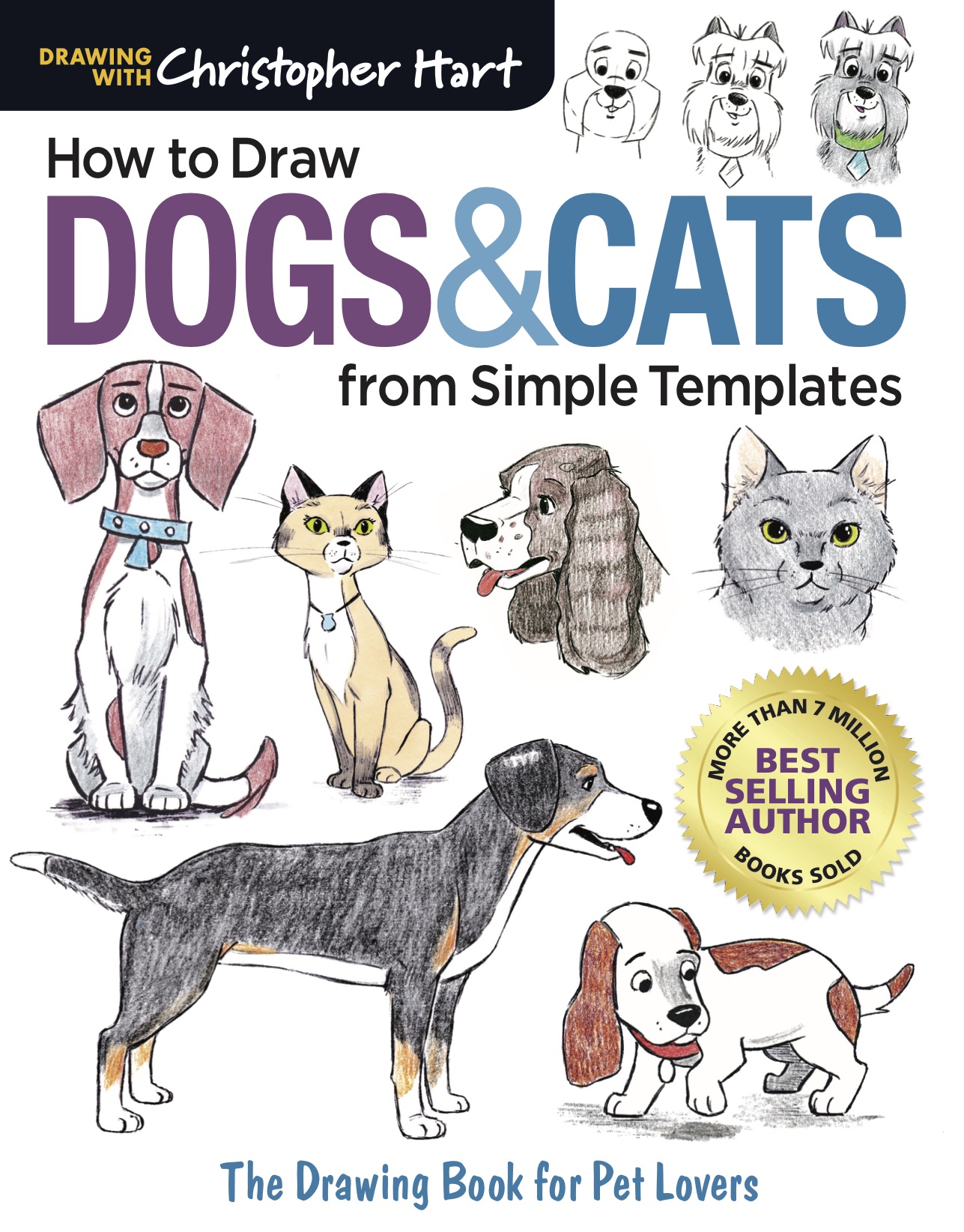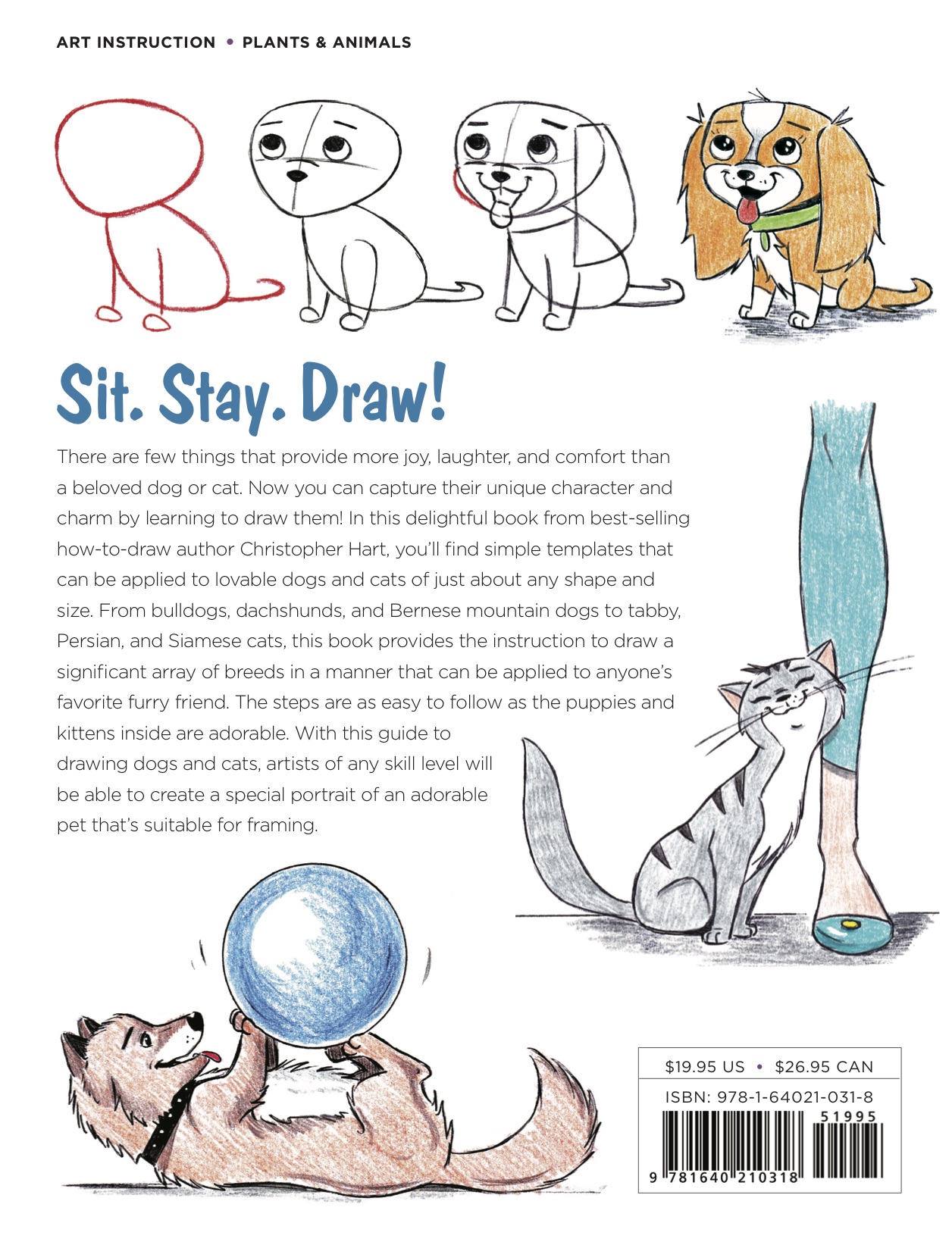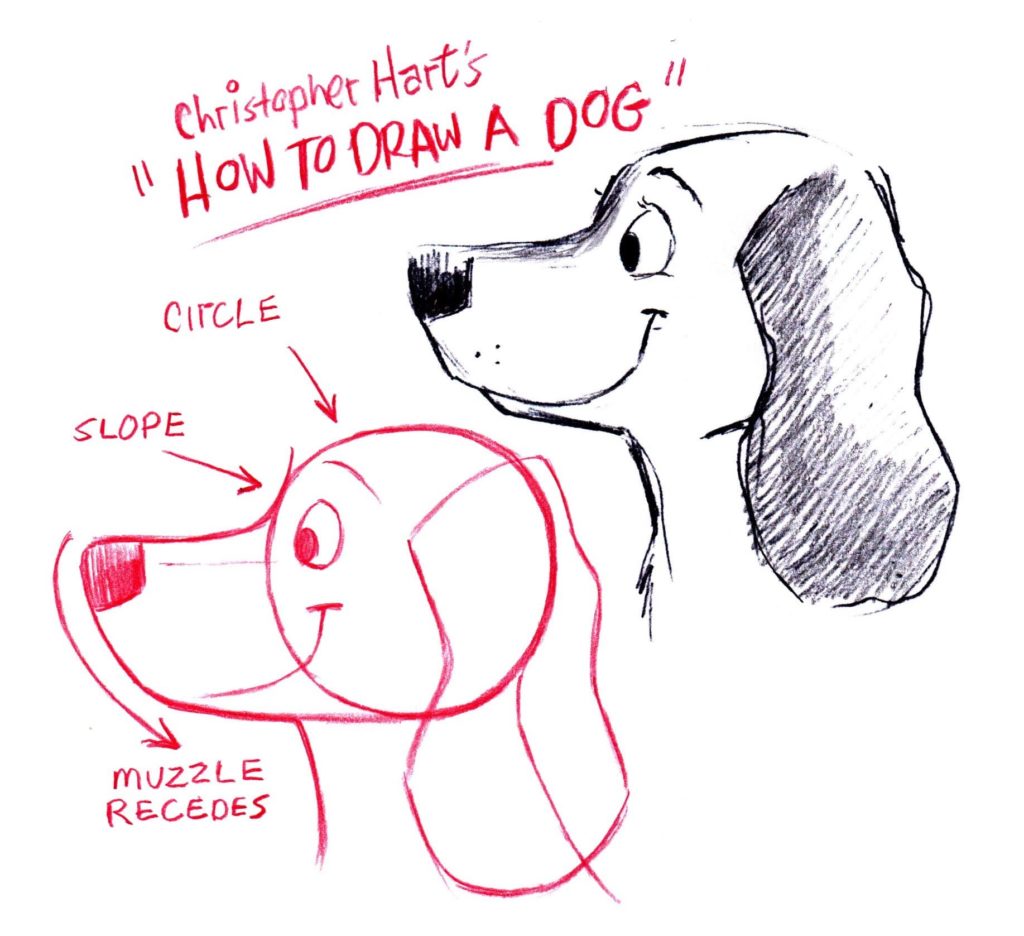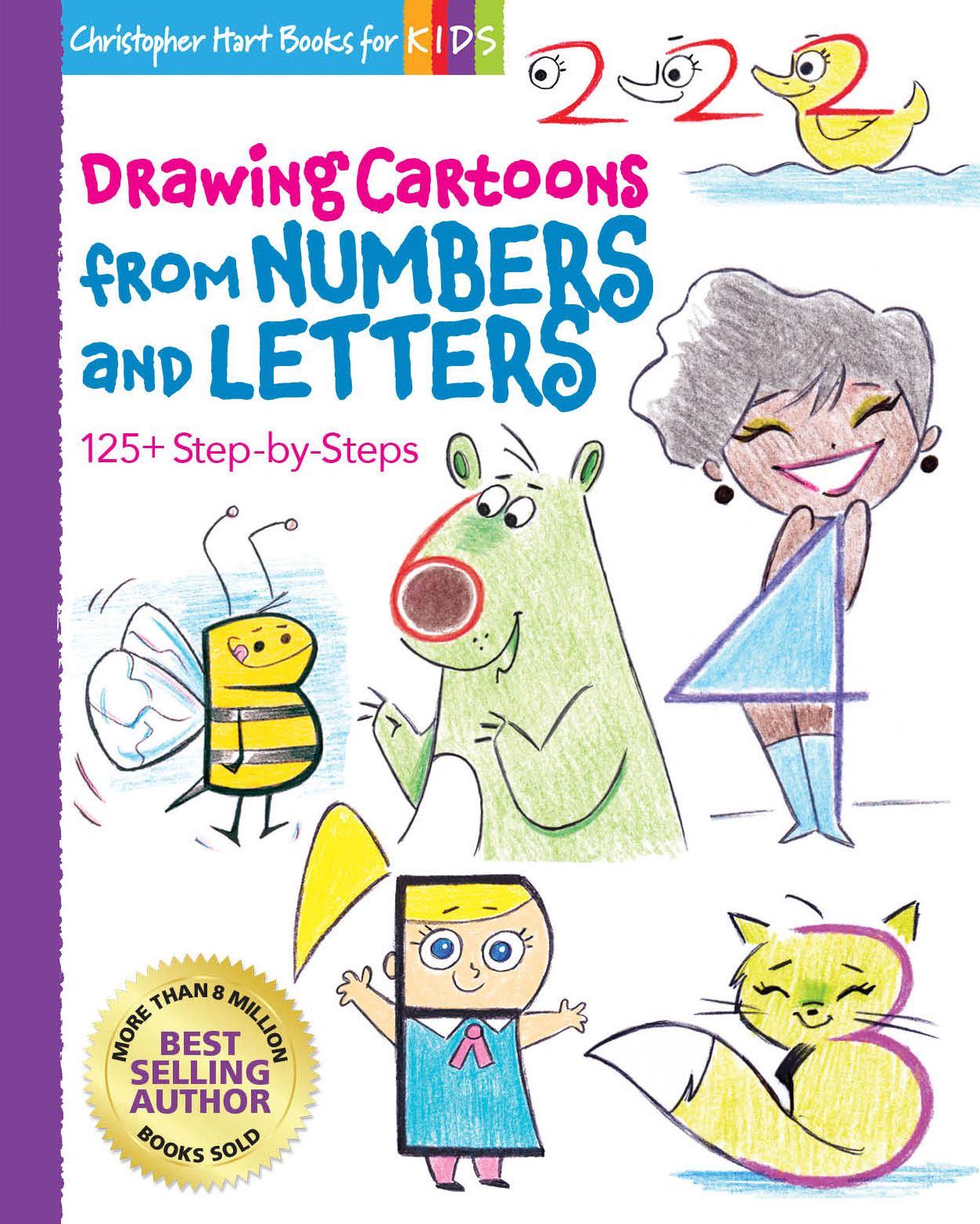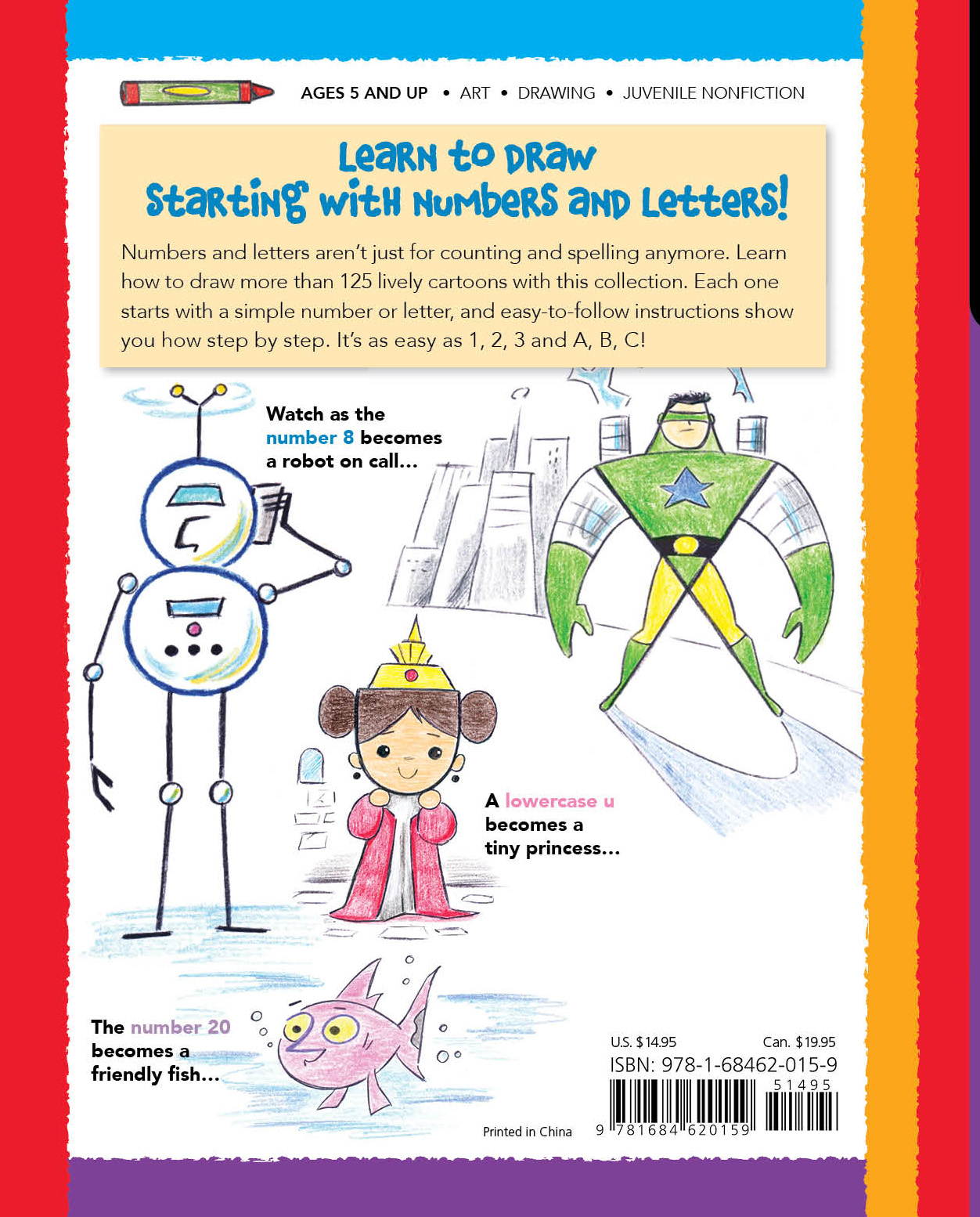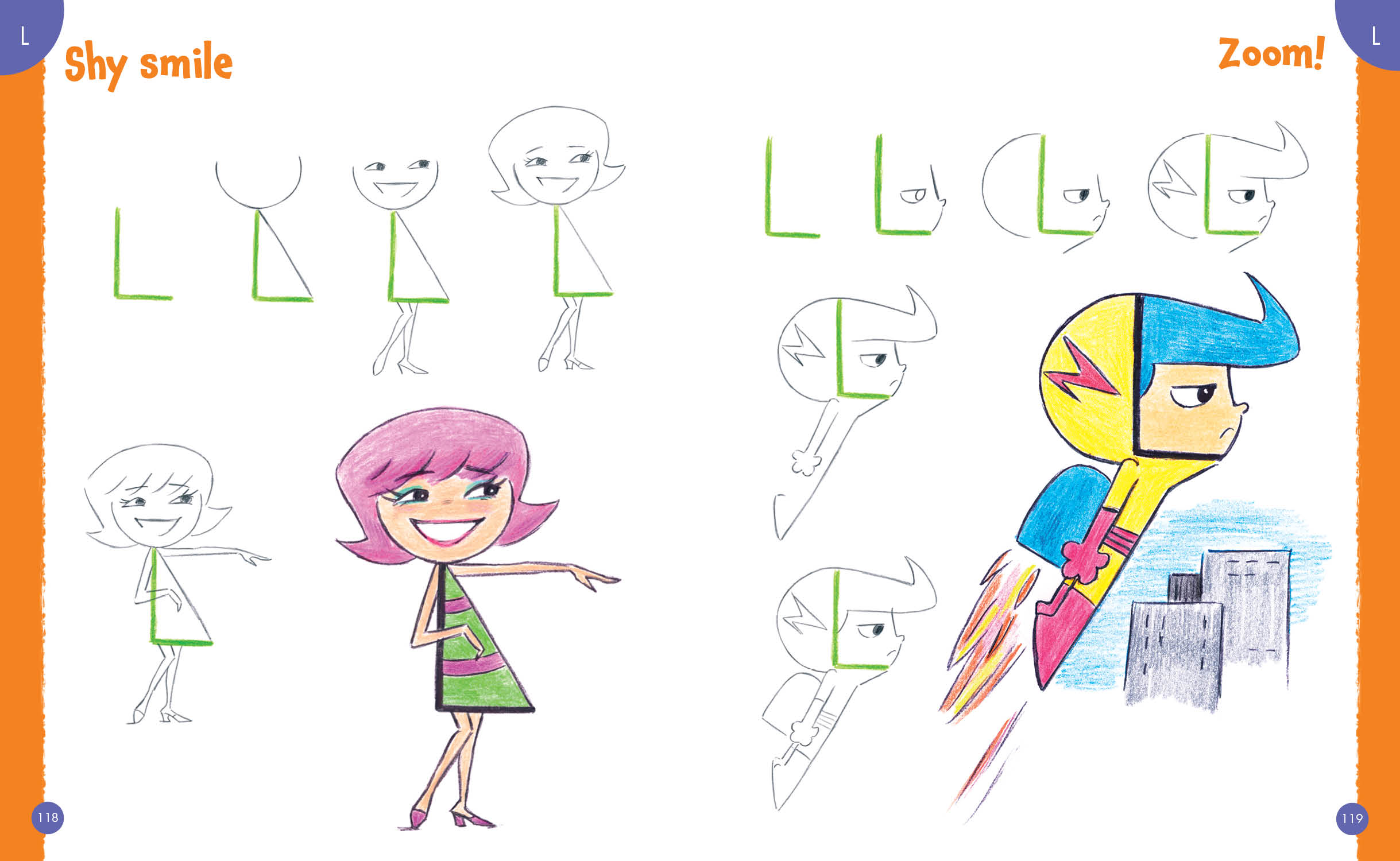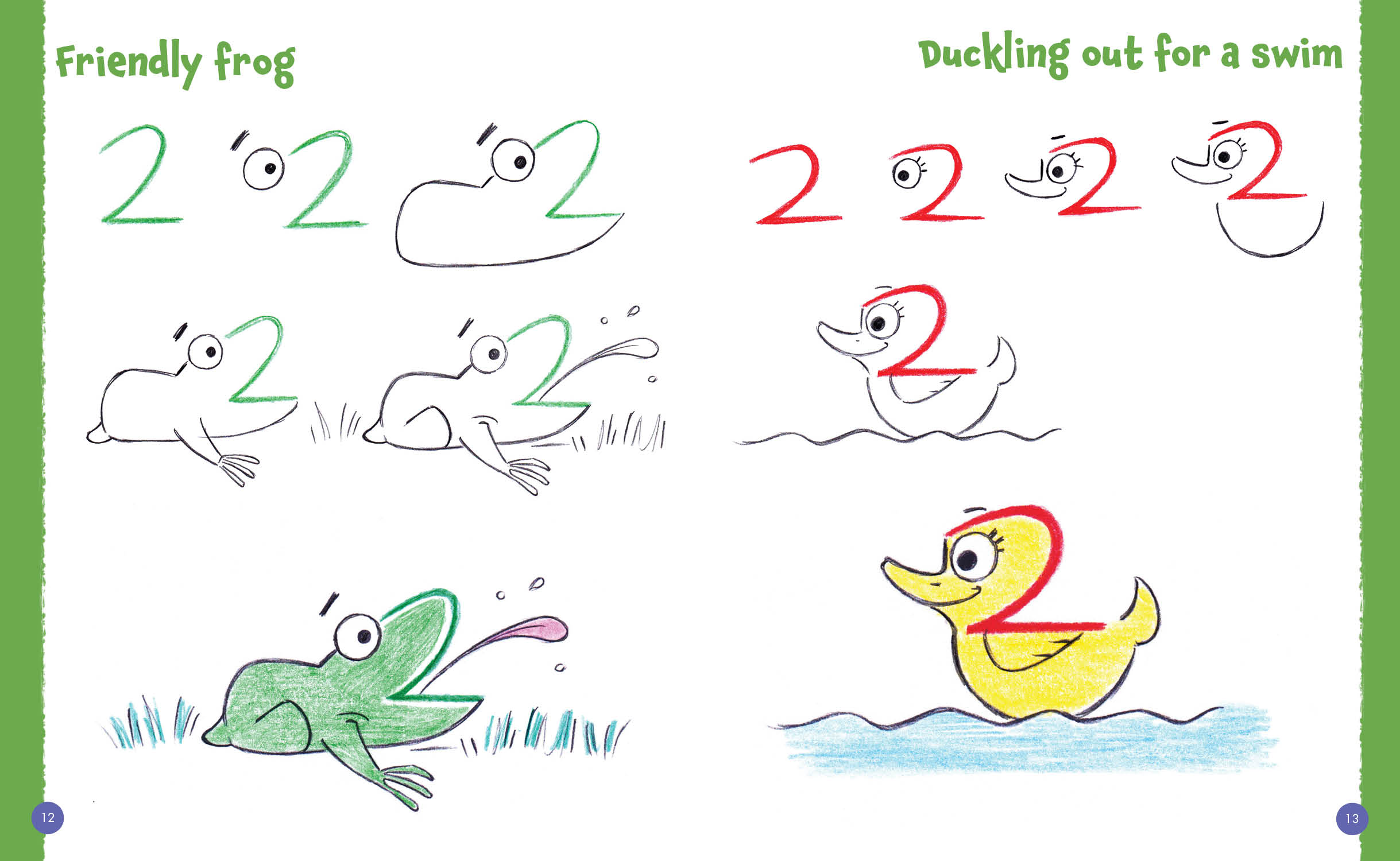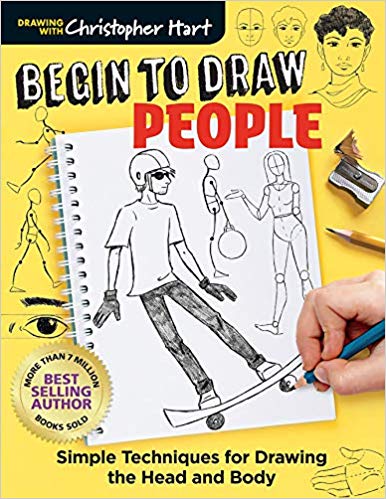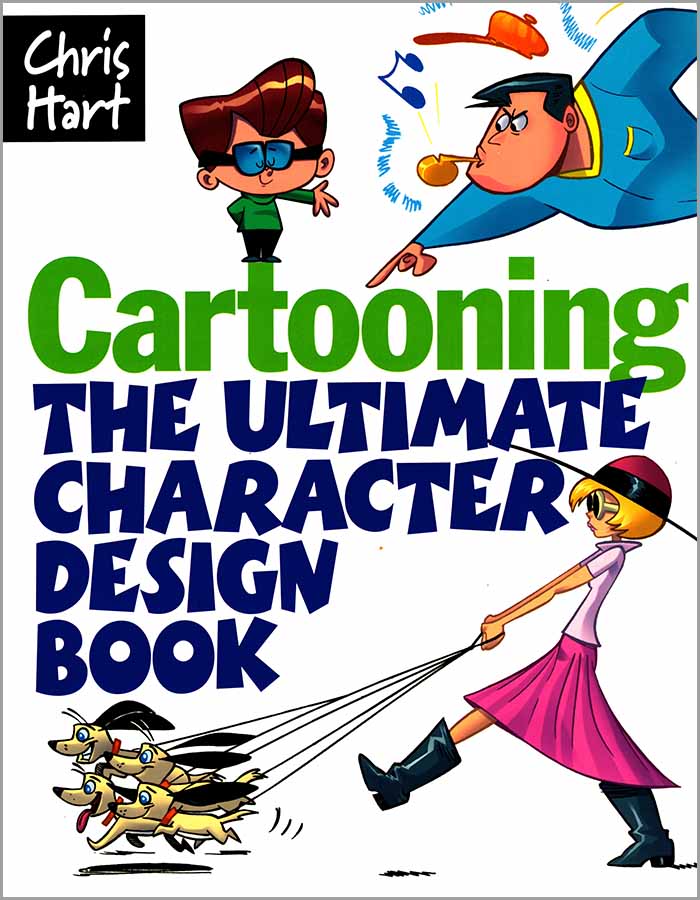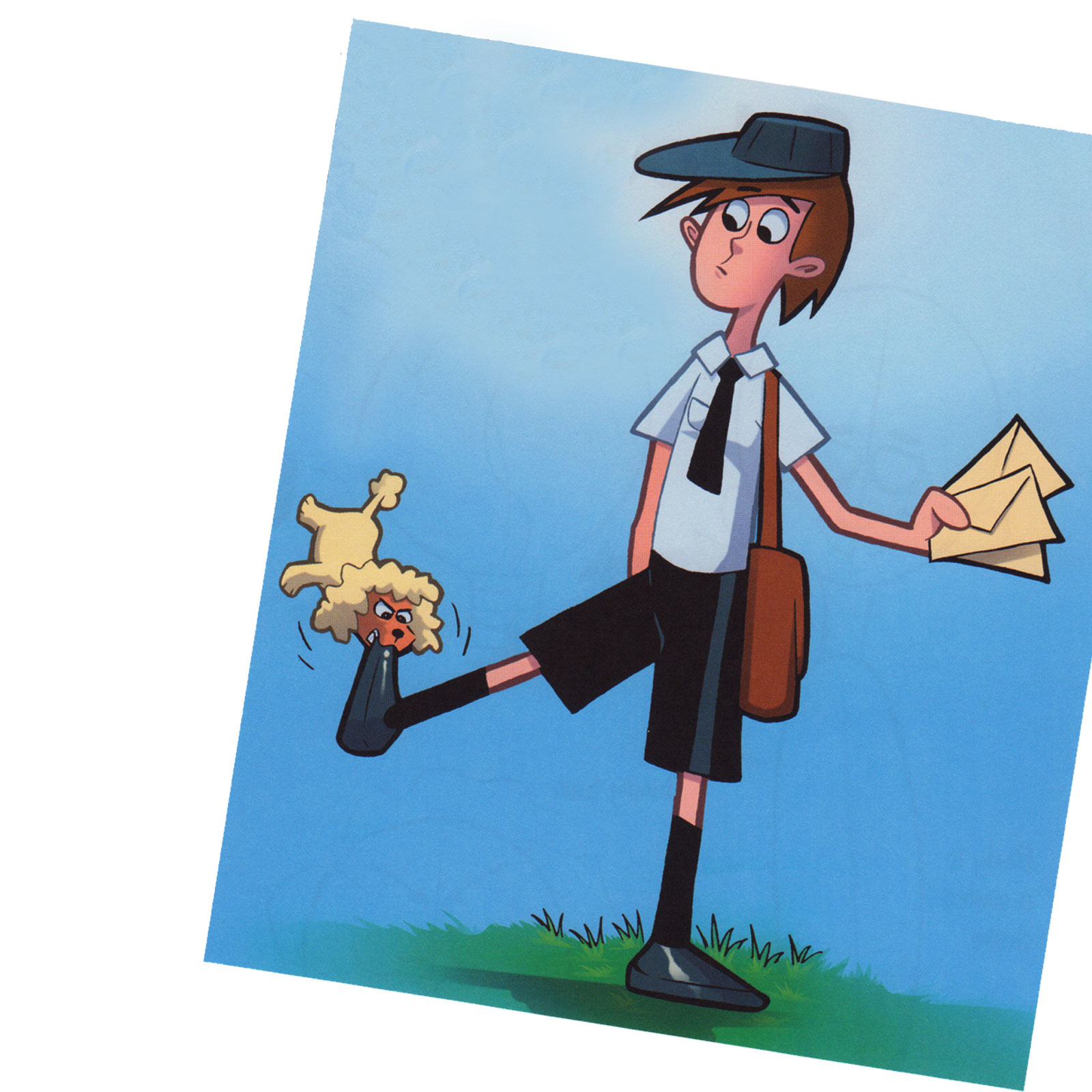by Christopher Hart | Mar 3, 2021 | Blog
First, select an angle for your pet, one that looks good and is easy to draw.
A side view is very popular.
Focus on the area where the forehead meets the snout. Draw it with a gentle slope so it doesn’t look abrupt.
Don’t overlook the back of the head, which give balance to the dog.
Add finishing touches. Most dogs have thick necks and ears that distinguish the breed.
You can find many more hints for drawing dogs and cats in my book, “How to Draw Dogs and Cats from Simple Templates.”
-Christopher Hart
by Christopher Hart | Nov 18, 2020 | Blog
Aspiring artists are motivated, diligent people! They learn new drawing techniques, they invent original characters, and they work to master existing characters. But at the top of the priority list should be “seeing.” What do I mean by that? It’s the ability to identify when something looks wrong in your drawing. If you can spot the error, you can fix it.
This is a skill that can be developed over time. Here’s an example, let’s say that an artist is trying to draw a viking. The beard doesn’t look right to him. So he draws it one way, then another, and so forth, but it still doesn’t look right. But the artist who can notice the correctness of his drawing takes a step back and says to himself, “Oh, the beard is fine. The mouth is too low on the face.”
Practice and a willingness to consider the problem before you try to fix it, are the keys. It’s a little like a chess game. First look at the board, then see the possibilities, then make your move.
I hope that’s helpful!
Christopher Hart
by Christopher Hart | Oct 9, 2020 | Blog, Tip of the Week
When you want to create a specific feeling in your viewer, it helps to consider how you’re going to do it. Just diving into a drawing is creatively cathartic, but may not be effective. Drawing is not just an aesthetic process, it’s also strategic. Here’s a drawing I did for a fantasy book. I wanted to give the book some gravitas. I wanted to put these little beings in grave danger in order to get the viewer to root for them. The angle of the stairs and size of the door (barricade) conveys an urgency to the task. The little beings can barely make it up the stairs, let alone keep out the danger on the other side of the gate – but they must, or the kingdom will be lost. You’ll have your own process in developing a concept. But it may be helpful to take a moment to plan ahead.
by Christopher Hart | Sep 27, 2020 | Blog
Most beginning artists think in terms of drawing “lines,” when in fact, things, people & animals are created with “shapes.” When you start with shapes, you tend to draw rounder, and you also create things that are lifelike. Well-defined shapes for the head and body exude personality. To help artists learn this easy technique, I created the new book, “Drawing Cartoons from Number and Letters.” Not only does this book get you thinking about shapes, but it’s a lot of fun, too!
by Christopher Hart | Aug 21, 2020 | Blog
Lately, I’ve been getting the same question from a number of my readers: Do professional cartoonists use the step-by-step method to draw? The answer is that many use it, and the ones that don’t incorporate it into their work. Think of a professionally trained, classical pianist. She does hours of rudimentary scales to build her skills. When she’s ready to perform at a high level, those basics are built into her technique.
So, if you were to look at some “model sheets” of famous, animated movie characters, you would see that the underlying construction is spelled out with basic shapes. The purpose of the model sheets is to guide the professional animator. So yes, the steps are super important. Can you draw without them? Yes. But why would you want to?
Until next time!
Your How-to-Draw Sherpa,
Christopher Hart
by Christopher Hart | Jul 30, 2020 | Blog, Uncategorized
I’m often asked, “How do you come up with your ideas?” It’s not easy to come up with a unique and compelling concept. But is that always necessary? It may surprise you to learn that the “idea” isn’t always the most important aspect of a drawing. How big of an idea is a sunset? Or a person walking a dog? The effectiveness of an idea lies in its execution – in the way you draw it, what to bring to it, and the style. For example, someone walking her dog could be turned into a humorous scene if the dog refuses to budge! It’s a simple premise. The humor lies in how much effort the person uses to pull on the leash, and how determined the dog is not to give in. So remember, a simple idea can be a good idea, if you have fun with it. I hope that helps.
